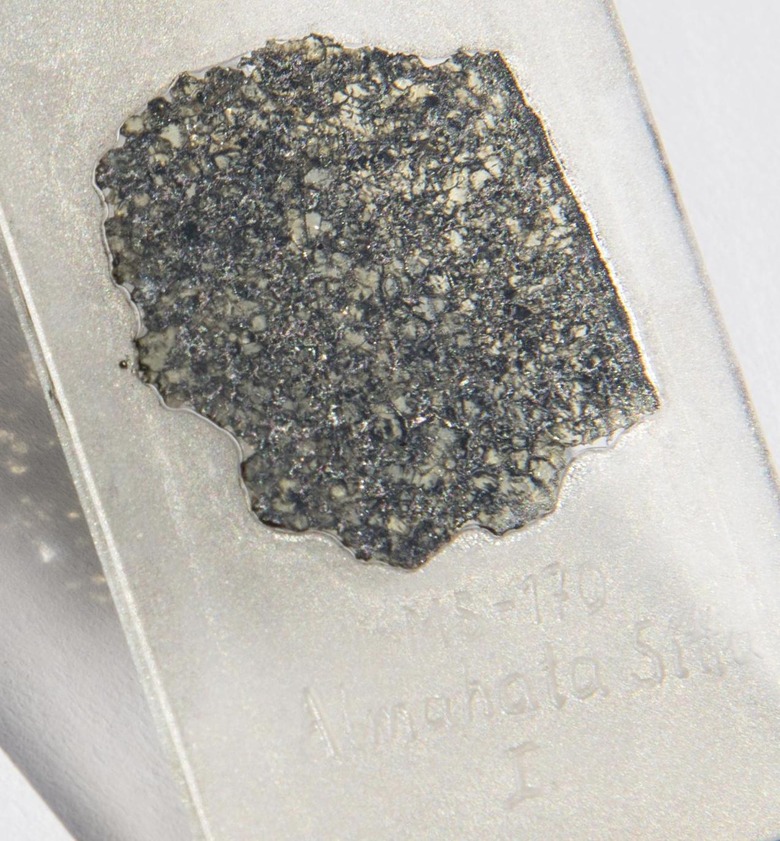Alien Diamonds Hit Earth In Meteorite
This is the Almahata Sitta ureilite achondritic meteorite, and it's full of diamonds. The arrival of this meteorite actually happened all the way back in 2008, but the study revealing its contents only arrived just this week. Said study showed that not only is this hunk of space debris full of diamonds, it's full of diamonds from a hereto unknown planet that may have been part of our own solar system in the distant past.
Almahata Sitta was recovered from Asteroid 2008 TC3, a hunk of space debris that landed in the Nubian desert in Sudan in 2008. The fragments studied here consist of mostly ureilites, rocks that come from the original ureilite parent body (UPB). That original UPB had some sort of impact in the first 10 million years of our own solar system, and chunks in Asteroid 2008 TC3 have been making their way toward our planet ever since.

Our solar system began to form approximately 4.6-billion years ago – which means this hunk of rocks and such is pretty gosh-darned old. To study this piece of history, researchers (carefully) worked with one section of the Almahata Sitta ureilite meteorite using transmission electron microscopy. In this study, they discovered diamonds.
Not the same sort of diamonds as are in your ring, probably, but diamonds nonetheless. These diamonds had chromite, phosphate, and (Fe,Ni)-sulfide inclusions – all of which pointed toward a formation pressure higher than 20 GPa. Because of these elements and their implications, researchers hypothesized that the ureilite parent body was a size somewhere between Mercury and Mars. Was this Planet X? No, because it's been blown to bits, billions of years ago.
"Owing to their stability, mechanical strength and melting temperature, diamonds very often encapsulate and trap minerals and melts present in their formation environment, in the form of inclusions," said the study by Farhang Nabiei et al. "In terrestrial diamonds, this has allowed to estimate the depth of diamond formation, and to identify the composition and petrology of phases sampled at that depth. Therefore, diamonds formed inside the UPB can potentially hold invaluable information about its size and composition."
For more information on these bits of rock and other neato space particles, have a peek at the research paper in Nature. There you'll find the paper entitled "A large planetary body inferred from diamond inclusions in a ureilite meteorite" authored by Farhang Nabiei, James Badro, Teresa Dennenwaldt, Emad Oveisi, Marco Cantoni, Cécile Hébert, Ahmed El Goresy, Jean-Alix Barrat, and Philippe Gillet. This paper can be found with code doi:10.1038/s41467-018-03808-6 via Nature Communications 9, article number 1327 (2018).
